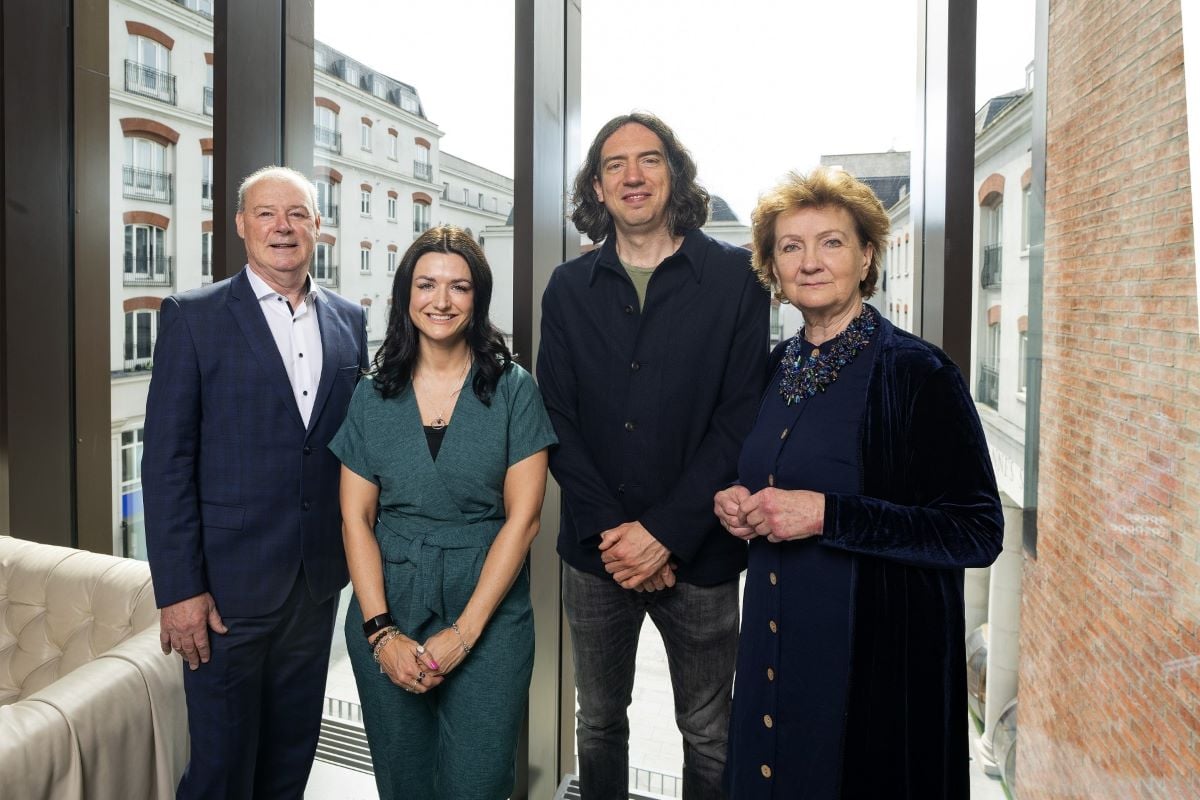
Arts Council Northern Ireland's Liam Hannaway, Karly Greene, and Roisin McDonough, along with musician Gary Lightbody (second from right)
Photo: Arts Council of Northern Ireland
Arts Council Northern Ireland publishes 10-year strategy
Generating more income for the arts sector from private, public and philanthropic funders will be central to Arts Council Northern Ireland's plans for the next decade.
Arts Council of Northern Ireland will introduce a three-year funding cycle and seek to generate more income for the sector to ensure its financial stability as part of its plans for the next decade.
The body's Strategic Plan for 2024-2034, published this week, features six outcomes that will inform its actions over the next ten years.
Central to this is the aim of creating a "more financially stable arts sector" by introducing a long-term, outcomes-based three-year investment cycle and generating more income for the sector.
READ MORE:
- ACNI says government funding ‘simply not enough’
- Funded organisations diversify income in Northern Ireland
The strategy points out that government investment in the country's arts has fallen by 28% in cash terms over the last decade, from £14.1m to £10.1m – close to a 50% reduction in real terms.
Meanwhile, Northern Ireland has the lowest per capita government spending on the arts in the UK.
"It is a regrettable truth that government investment in the arts sector in Northern Ireland has not always matched the incredible potential and impact it holds," the foreword of the strategy states.
"Opportunities have been missed, and the growth of this wonderful sector has been hindered by a lack of adequate resources and recognition.
"But we refuse to be disheartened, for we firmly believe that our arts deserve better."
To address this, the strategy outlines the Department for Communities' intention to seek further resources and undertake a scoping exercise to assess how the ACNI can generate more income from private, public, and philanthropic funders.
It will also develop a set of investment principles for all investments and strengthen its monitoring and evaluation of investment programmes.
Alongside creating a more financially stable arts sector, the strategy outlines five further outcomes:
- A sector that develops looks after its people and is more inclusive.
- A sector that is better supported to develop through experimentation and innovation – enabling innovation and artistic risk-taking
- A sector that contributes to social and economic benefits and cares about the environment
- More people from all backgrounds can enjoy arts experiences.
- A sector that is more valued across society and government.
'Thriving arts sector'
Roisin McDonough, Chief Executive of the ACNI, said: “If we are to fulfil our strategic ambitions and establish a more financially stable arts sector, we do need to find additional investment. We hope the Minister will listen and help open doors across government to allow the arts to contribute to the delivery of wider Programme for Government outcomes, as many of our artists do already in the areas of health, cultural tourism, and the economy.
“Our artists contribute so much to society in return for a comparatively small amount of exchequer funding; think how much more we can do over the next ten years with more strategic support.
"Over the coming decade, with the Arts Council’s Strategic Plan 2024-34, we can build a brighter, more vibrant, and more culturally rich Northern Ireland.”
Arts Council Northern Ireland Chair Liam Hannaway said the organisation consulted more widely on the strategy than it had previously done.
"The Arts Council’s strategic plan for 2024-2034 is an ambitious but realistic, long-term roadmap," he said.
"It charts six outcomes and ten priorities that will help us achieve our vision – a vision of a society where all people can experience a thriving arts sector that is recognised as essential to creativity, well-being, and social and economic prosperity.
Join the Discussion
You must be logged in to post a comment.